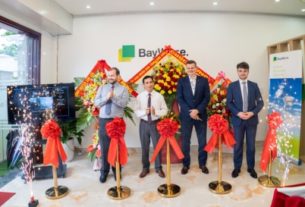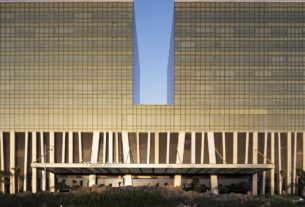Construction of the 100-kilometre “MUSTS” channel is crucial to saving Bangkok from future floods, the Engineering Institute of Thailand (EIT) reiterated yesterday.
“It stands for Multi-Service Flood Tunnel System. But also, I want to say that it’s a ‘must’ here,” said Suchatchavee Suwansawas, chairman of the Thailand Underground & Tunnelling Group (TUTG) of the EIT, which is under His Majesty the King’s patronage.
The subterranean passageway would run under Bang Pa-in-Bang Na Road and carry vehicular traffic during the dry season, Suchatchavee, who is also the chairman of World Tunnel Congress 2012, said in an exclusive interview.
MUSTS has many advantages over above-ground solutions.
It will require no or minimal land expropriation, was environmentally friendly, caused very little impact on local communities and was not prone to any land-encroachment problems, he said.
However, it would need an environmental impact assessment (EIA).
“All big projects should be subject to an EIA,” he said.
“There will be the usual drainage system under the tunnel. Under normal circumstances, it can be open to traffic. However, if there is massive runoff from upstream provinces like this |year, it will be closed to traffic |and turned into a floodway,” he said.
The water would be directed to the Bang Na area, where it would be easy to drain out to sea.
The mega-project will need up to five years to complete and likely cost about Bt200 billion (S$8.3 billion), which might be considered too expensive.
“It depends on how you look at it. The tunnel can be in service for about 100 years. It can save the country’s economy, which is worth Bt1.4 trillion. I think people should be able to decide on whether this project is worth the budget,” he said.
Although mega-projects have drawn suspicion that foreign investors are pushing for them behind the scenes, the intrinsic value of the projects should be looked at objectively, he said.
“To be fair, it’s good to propose something good … If the projects will deliver benefits to people, create jobs, improve the economy and are conducted with transparency, there will be fewer such comments,” he said.
Bangkok’s eastern flank is no longer protected by water-retention areas.
“The zone is now filled with Suvarnabhumi Airport, industrial parks and housing estates,” he said. “If we are going to push runoff water into the eastern zone, we must do it via an underground system.” MUSTS should be linked to the existing network of waterways, like canals and rivers, to expel runoff water efficiently into the ocean, Suchatchavee said.
It could also complement His Majesty’s flood-prevention initiatives.
Hong Kong, Japan and the United States have long used such flood tunnels to avert disasters.
“Malaysia is going to build a SMART tunnel in Kuala Lumpur too,” he said.
The MUSTS proposal has already attracted interest from some government agencies such as the Transport Ministry, which plans to study it in detail.
“If the government is interested, we are ready to provide further information on how the project can best be implemented,” he said.
If the government completed the MUSTS tunnel and prepared other anti-flood measures well, Bangkok should be able to escape the wrath of raging floodwaters in the future, he added.
Source: http://news.asiaone.com/News/Latest%2BNews/Asia/Story/A1Story20111212-315728.html


